The Sacred Valley in Peru is a popular destination due to the preservation of its ancestral cultures and its impressive natural scenery. In this guide to the Sacred Valley, we go over everything you need to know for your visit including the best things to do, when to go, and how to get there.
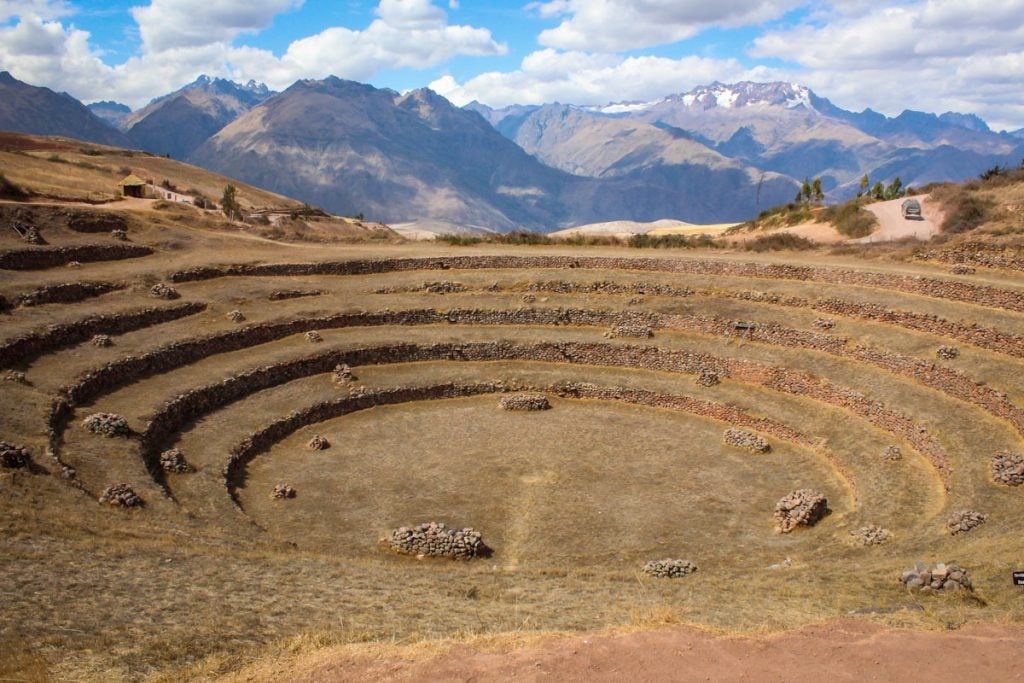
For centuries, the Sacred Valley has served as an important connecting route between Cusco and Machu Picchu. Carved by over 60 miles of the Urubamba River, the isolated indigenous towns, archaeological sites, ancient ruins, and colonial influences dotting the valley have encouraged the curiosity of millions of travelers.
To the Incas, who conquered the land sometime between 1000 and 1400 CE, the Sacred Valley was the center of their ancient world. The valley’s location and elevation allowed crops to thrive and aid in sustaining their entire civilization.
Most impressively, the ancient techniques have been so well preserved that you can see them in practice today by indigenous farmers and communities.
The Sacred Valley of Peru can be experienced in a myriad of ways, which is why we made this guide to showcase all the incredible things to do in the area. The network of impressive hiking trails, dozens of colorful market stalls, and ancient sites make for an all-encompassing visit to feel the true essence of the valley.
But no matter which way you choose to explore the Sacred Valley in Peru, this guide gives you everything you need to know to plan the perfect trip to follow the original paths laid by pre-Columbian civilizations and the ancient Incas.
Sacred Valley Travel Guide
Psst! If you’ll be traveling more throughout the country, be sure to check out our bucket list of can’t-miss things to do in Peru!
Where is the Sacred Valley
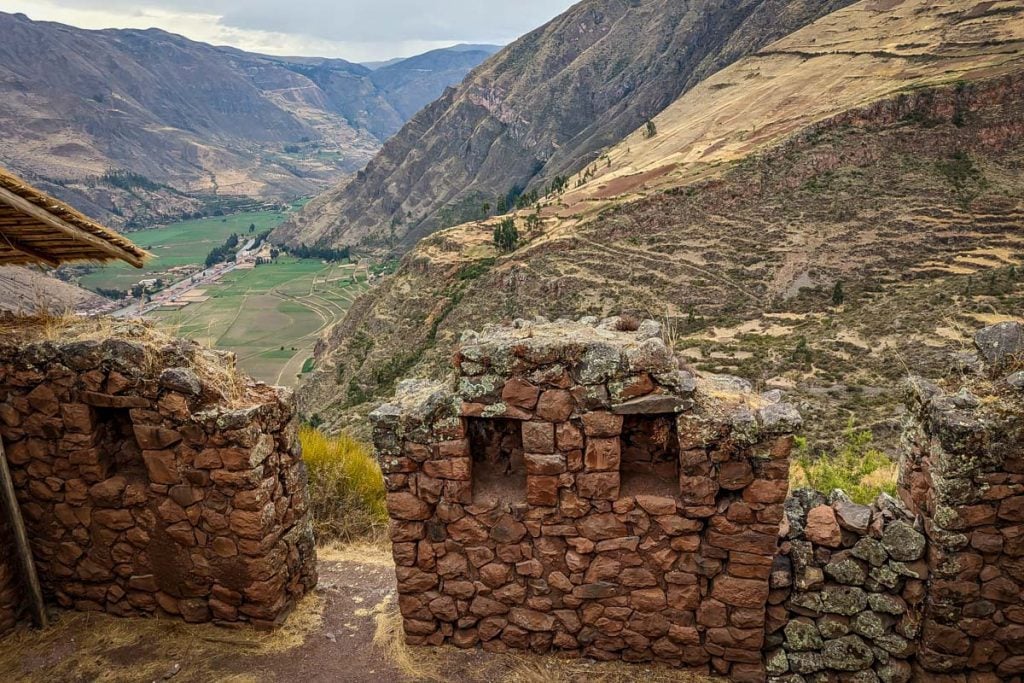
The Sacred Valley is just north of the Imperial City of Cusco. It stretches west to east from Pisac to Ollantaytambo and is carved by a winding river that stretches almost 450 miles through Peru.
Although the river has many names depending on its geographical location, the 62-mile portion winding through the valley called the Urubamba River is a defining feature of the Sacred Valley.
Pisac and Urubamba are the closest towns to access the Sacred Valley from Cusco (the nearest major city). These two towns once served as the valley’s line of defense against enemy attacks, each situated on the eastern and western edges of the valley. Due to their location, they make great basecamps for exploring the area.
Psst! Check out our guide to the best things to do in Cusco while you’re in the area!
Best time to visit the Sacred Valley Peru
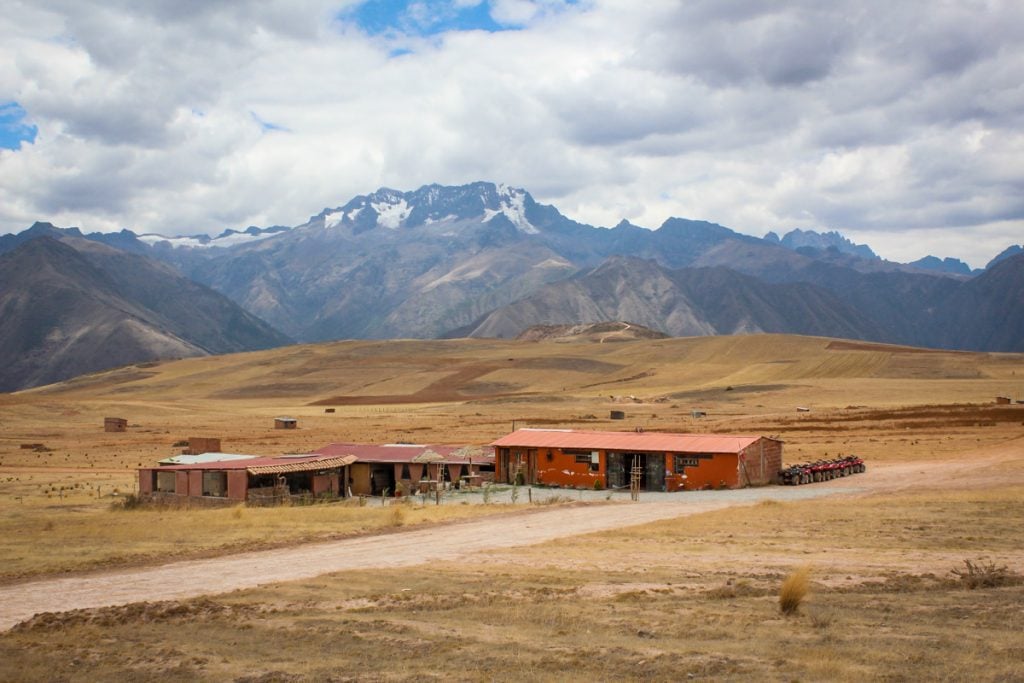
Adventures through the Sacred Valley are best experienced with sunny, dry weather. To see the most of what the valley has to offer, you’ll be outside, and the last thing you’d want is your visit to get rained out.
Although the Sacred Valley is quite the opposite to the towering peaks of the Andes Mountains, it’s still considered to be part of Peru’s highlands due to its high elevation.
The wet season typically begins in mid-December and lasts through March, while the dry season is in full swing from April to November. Plan your visit to the Sacred Valley during the dry months, but note that peak tourism season runs from June through August.
Psst! For an in-depth guide on the regional seasons, weather patterns and other factors, check out our complete guide on the best time to visit Peru.
How to get to the Sacred Valley Peru
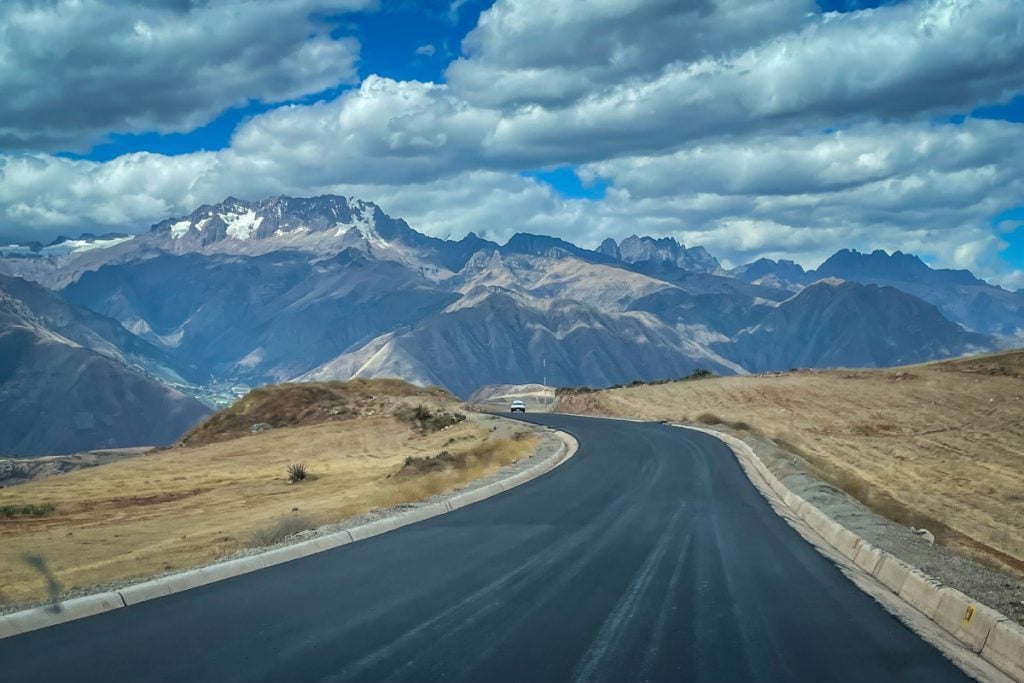
The Sacred Valley of the Incas can be explored in a variety of different ways depending on your travel style and what you want your experience to be like.
If you’re short on time, the valley can be seen on a jam-packed day trip from Cusco, otherwise you can spread your visit out over several days to spend more time in each place.
The amount of time you spend here will depend on how you’re getting around. You can take your time traveling with a rental car, craft your own itinerary using public transportation, or have all the planning done for you on a tour.
Renting a car
Getting a rental car in Peru is a nice way to explore the country and valley at your own pace. However, renting a car in Peru isn’t always recommended due to the conditions of the roads and the fact that in Peru some drivers stray away from the road rules.
If you’re comfortable navigating mountainous terrains and driving in other countries, this could be a considerable option, but with the abundance of public transport and guided tour options, you can explore the Sacred Valley just as easily without driving yourself.
Public transportation
Buses are the main form of local transportation in Peru, and there are buses that leave for the Sacred Valley daily, making it easy to catch a ride to many of the main towns.
Public transport in Peru is cheap, so you can use any combination of bus routes to get around the valley on a budget. The most challenging aspect of using local buses is paying for the variety of connections between towns. However, it’s still a great method for exploring on your own time.
There are colectivos that leave Cusco to go to towns in the Sacred Valley every 15-minutes that cost around 15 soles. You can take a colectivo from Cusco to or between all the small towns: Ollantaytambo, Urubamba, Maras, Chinchero, Moray, and Pisac at a variety of different price points.
Be sure to keep plenty of spare change on you to pay for each ride. And note that colectivos won’t leave their stop until they are completely full. We recommend planning a route out so you know what to expect and how long it will take between places.
You can also take the train from Cusco to Machu Picchu, then get off in Ollantaytambo on the return trip to spend time in the Sacred Valley.
Psst! Will you be traveling from Lima? We have a detailed guide on how to travel from Lima to Cusco which outlines all of your transportation options.
Guided tours
Since there is so much to see and experience in the Sacred Valley, a guided tour is a great way to see a lot of sites in just a day or two. Without a tour, you would need to book arrangements to and from each site, but with a tour all that is done for you.
Get Your Guide some great tours of the Sacred Valley leaving from Cusco that include a wide variety of sites and stops depending on your interests.
- From Cusco: Sacred Valley, Pisac, Moray, & Salt Mines: See all the must-visit sites in the valley for an epic full-day trip. Visit Mirador Taray, explore Pisac, learn about the history of the Incas in Moray and Maras, drive along the Urubamba River and end the day exploring Ollantaytambo.
- From Cusco: Moray, Maras Salt Mines, & Chinchero Weavers Half-Day: If you don’t have a lot of time to explore the valley, this half day tour is an amazing option. You’ll travel through the Urubamba Valley to get to the village of Moray. Visit the agricultural terraces, explore the Maras Salt Mines, then end the afternoon in Chinchero to visit ancient weavers before heading back to Cusco.
- From Cusco: 2-Day Trip to the Sacred Valley and Machu Picchu: This relaxed two day tour allows you to dive deep into the ancient towns of Pisac, Urubamba, and Ollantaytambo before enjoying a guided tour of Machu Picchu. This relaxed tour doesn’t offer additional time for extra hikes in Machu Picchu.
Things to do in the Sacred Valley Peru
The Sacred Valley of the Incas is often regarded as one of the most important places in South American history. The valley, plus Machu Picchu and Cusco, make up the heart of the ancient Incan Empire.
There are endless places within the Sacred Valley to travel back in time and experience the wonder of this ancient site. Here are our top recommendations for things to do.
1. Marvel at the salt mines in Maras
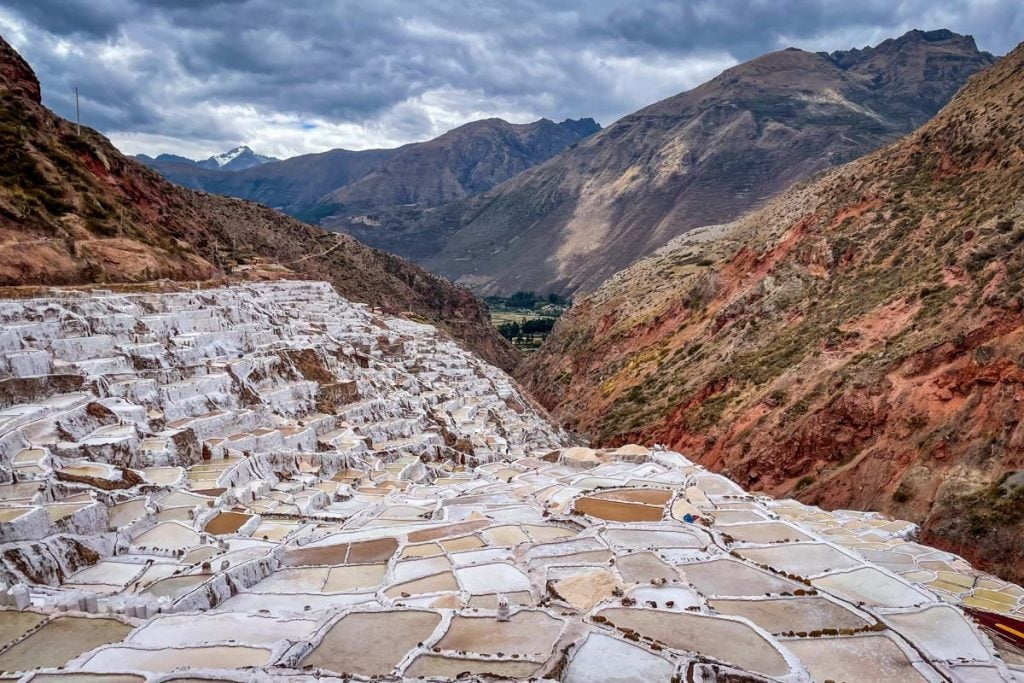
The Salineras de Maras, or Maras Salt Mines have been producing salt in the Sacred Valley for over 500 years, predating the Incan empire.
The salt mines were believed to be created by the Wari civilization, and once the Incas took it over, the salt became an important mineral for their empire. All the salt they extracted was used for food storage, livestock, consumption, and even mummification.
The most fascinating feature of the mines is that its location contributes greatly to its ability to produce the salt. The pools are all connected with a series of underground canals that run water to each pool, and then are shut once they’re filled so the water can evaporate.
The harsh sunlight of the valley dries up the water, leaving behind the salt that will be foraged using shovels and wooden rakes.
The same ancient techniques that originated between 500 and 1100 AD are still used by the 600+ local families that own the salt mines today. Their efforts are pooled as a cooperative, making the Maras Salt Mines one of the top 10 largest in the world.
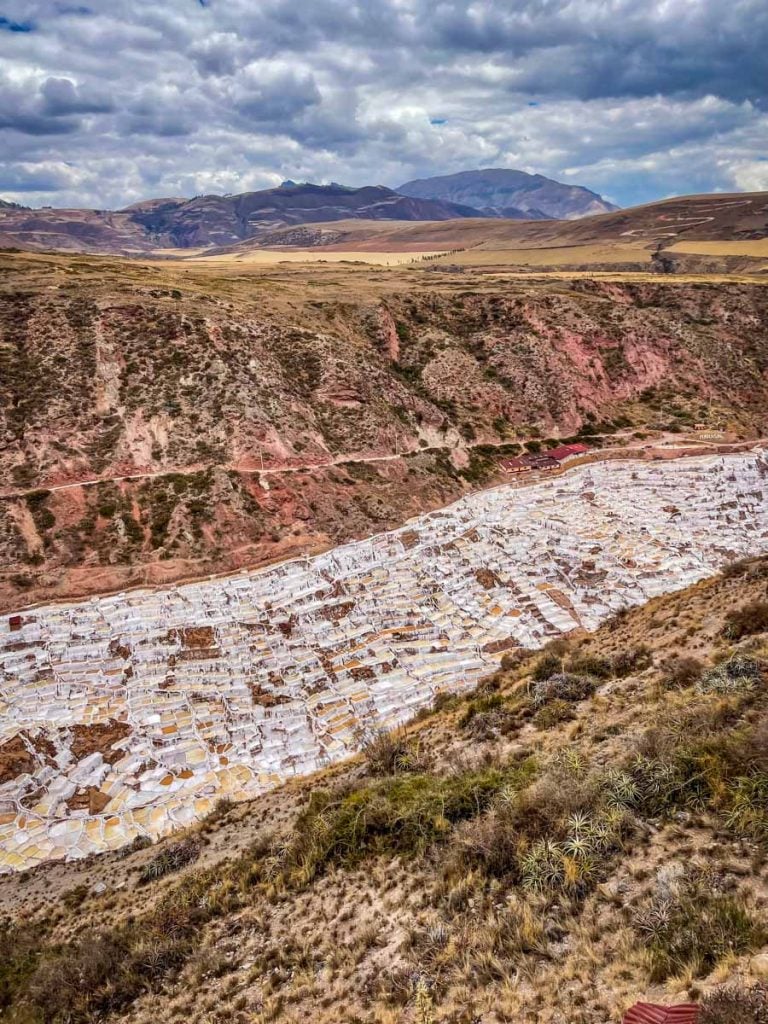
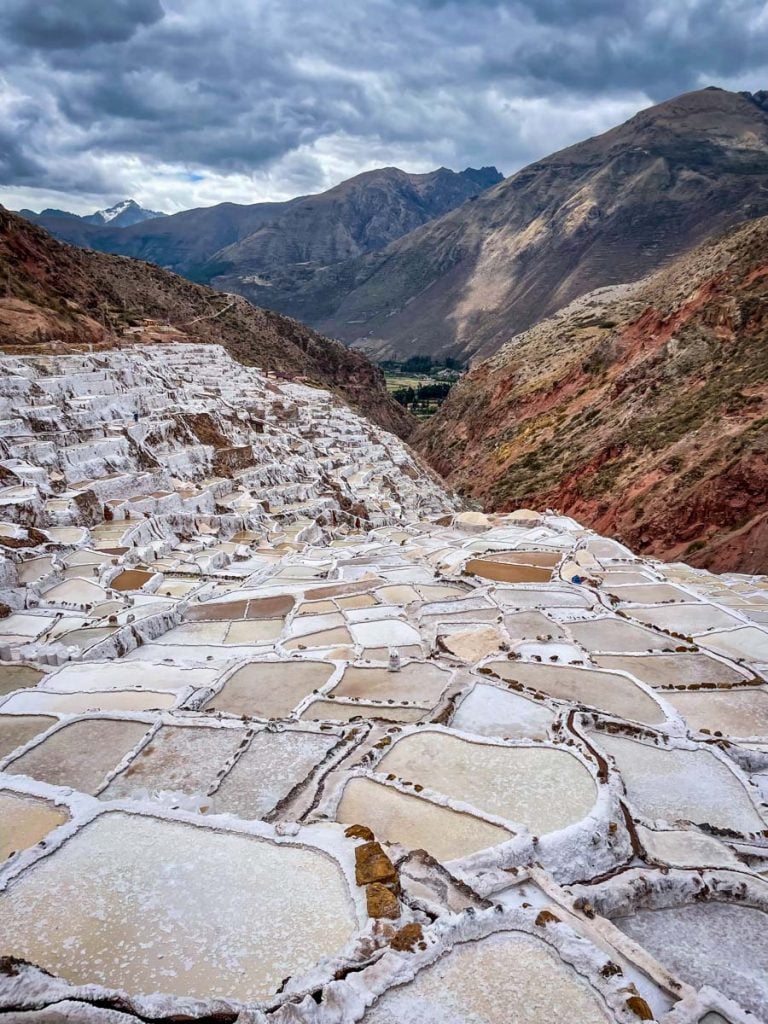
As of 2019, entrance to the mines has been restricted. You can still see the salt pools from various viewpoints above and around the mines where you can get plenty of photos without disturbing the natural process.
Afterwards be sure to peruse the souvenir shops and buy all the salt products you can think of! The profits from these sales help the Maras community keep the salt mines operational.
2. Pay a visit to Pisac
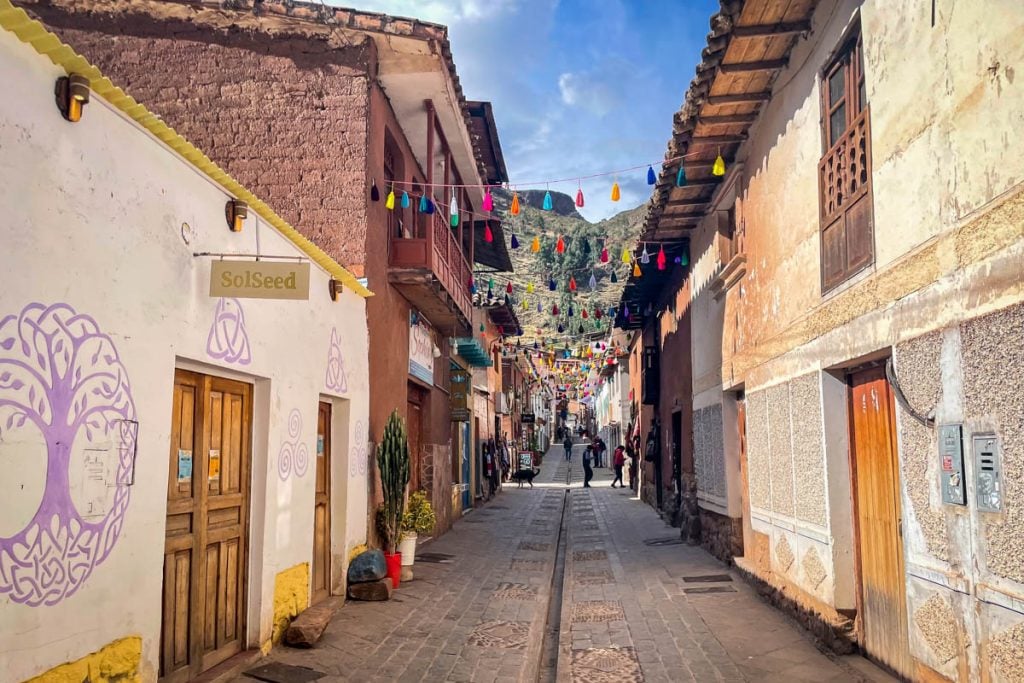
Pisac is a village in Peru’s Sacred Valley, located about an hour northeast of Cusco. This small community in the Andes still practices a more traditional way of life, offering visitors a unique glimpse into Peruvian culture.
The word “pisac” comes from the Quechua word “pisaq”, which directly translates to “partridge”, and it’s theorized that the shape of this ancient city resembles this bird.
The defining feature of Pisac is the Inca ruins built into the mountainside looking down over the village. The placement of the ruins and many features of the ancient town imply that this city was significant to the Incas for only as a line of defense, but for agriculture, burial grounds, and religious ceremonies.
Things to do in Pisac
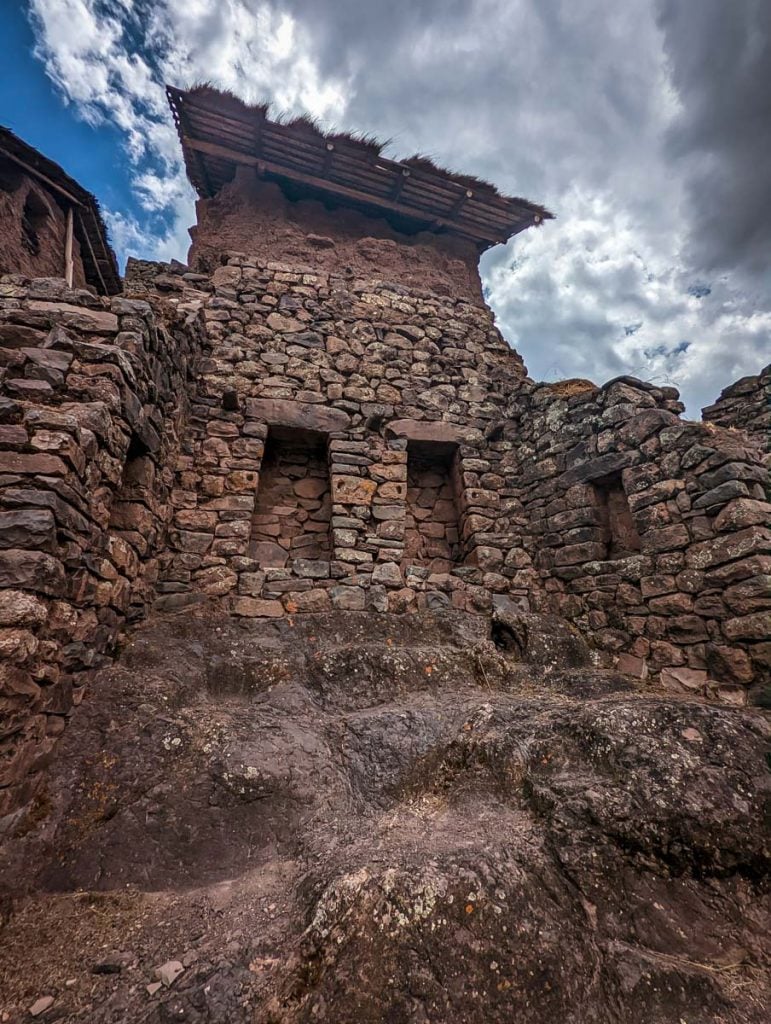
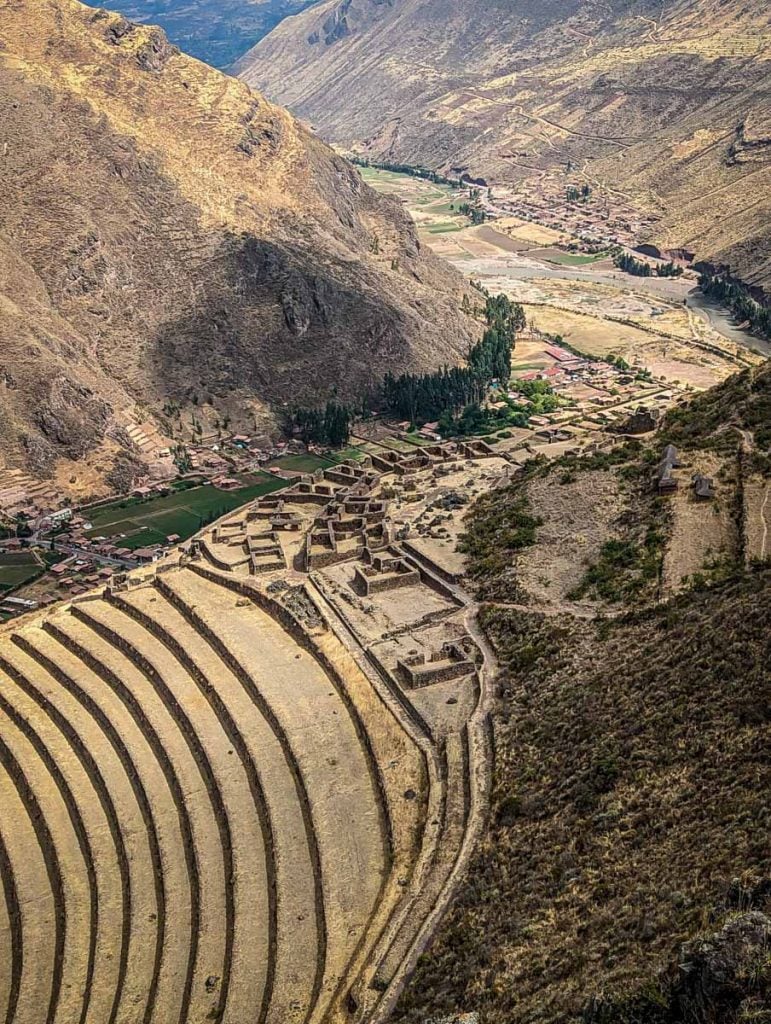
- Hike up the canyon to the Pisac ruins. National Geographic named these some of the best Inca ruins to see outside of Machu Picchu. The citadel is on a hilltop overlooking Pisac and was believed to be a guard tower for the Urubamba Valley below, as well as a pass to access the jungle.
- Explore the small town and watch as the locals go about their day dressed in traditional attire.
- Eat empanadas fresh off the wood-burning stove and other classic Peruvian dishes.
- Visit the Sunday Market – by far the best time to visit as the village comes alive in the Plaza de Armas.
- Wander through dozens of colorful aisles in the Mercado de Artesania. Shop for handmade Andean crafts, get your fix of local street food, and marvel at the varieties of woven goods.
- A quick stroll through the town’s botanical garden will introduce you to the unique plant life in the Sacred Valley. This quaint garden has one of the best collections of cacti in Peru due to the works of Felipe Marin Moreno, who the garden is often named after.
3. Climb to the Temple of the Sun in Ollantaytambo
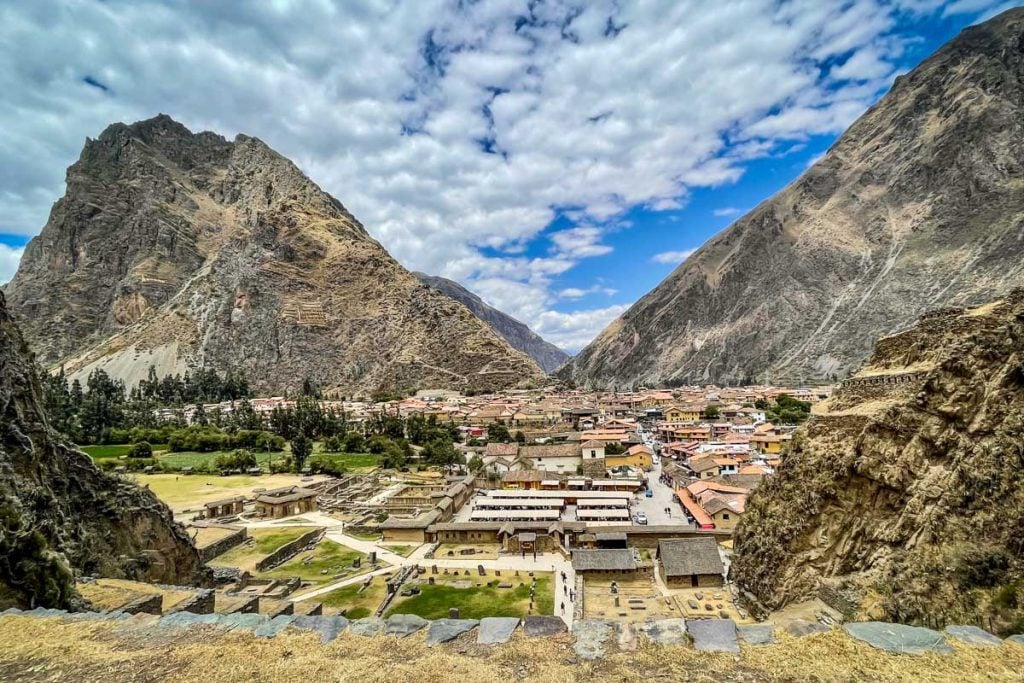
On the western edge of the Sacred Valley is Ollantaytambo is a small indigenous town, often overlooked by neighboring Machu Picchu. It’s filled with ancient culture and history dating back to the pre-Columbian era, most notably the Temple of the Sun atop the Ollantaytambo ruins.
The Ollantaytambo ruins were once a fortress overlooking the village below. The ruins feature the Temple of the Sun, agricultural terraces, storehouses, and an ancient Incan water system that was brought back to life in the 80s.
Mysteriously, the quarry site where the Inca mined the rocks for their temple is over four miles away, across a valley on the other side of the mountain. How they transported the multi-ton rocks remains a mystery.
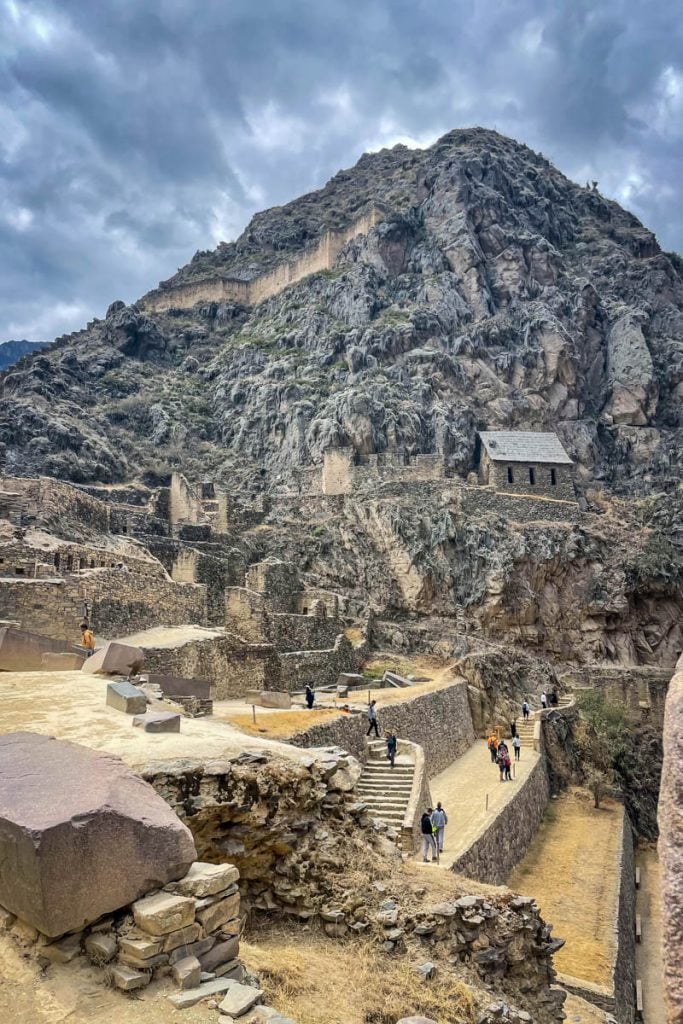
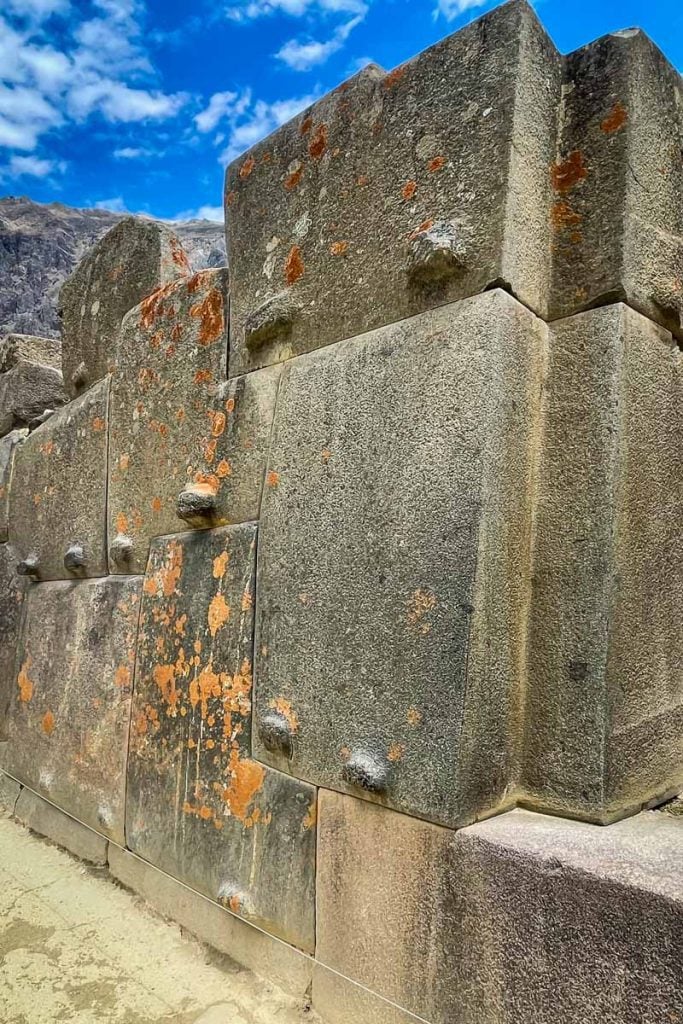
Other things to do in Ollantaytambo
- Ollantaytambo Market: Just outside of the town ruins you can wander lines of small stalls filled with textiles, dolls, any size and shape souvenir you can imagine.
- Pinkuylluna Granary: These 15th century granaries were built by Incan emperor Pachacuti to store grain that was harvested from the surrounding areas. It’s a short and steep hike, but is well worth it for the views of Ollantaytambo town and ruins below.
- Inti Punku Hike: If you didn’t hike the Inca Trail, you can hike to the Sun Gate, an important archaeological site that was once the main entrance to Machu Picchu.
- T’anta Wasi Bakery: This bakery was set up by the non-profit, Sacred Valley Project, to help local indengenous girls get access to education. Pick up any of their fresh breads, sandwiches, and pastries as you wander around town.
4. Ponder the ancient agricultural ruins of Moray
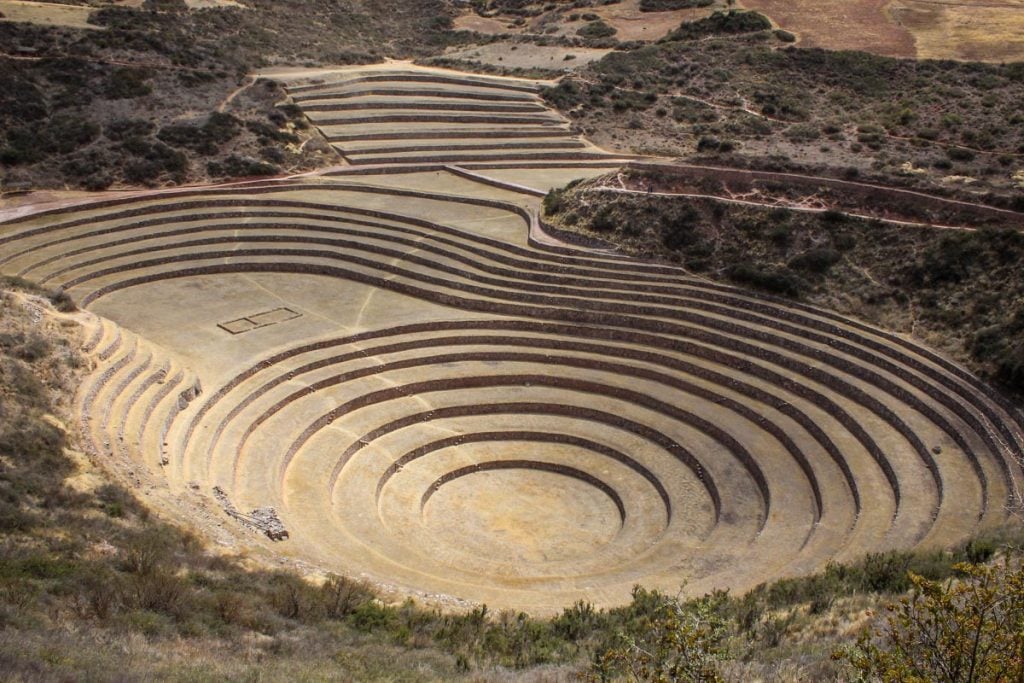
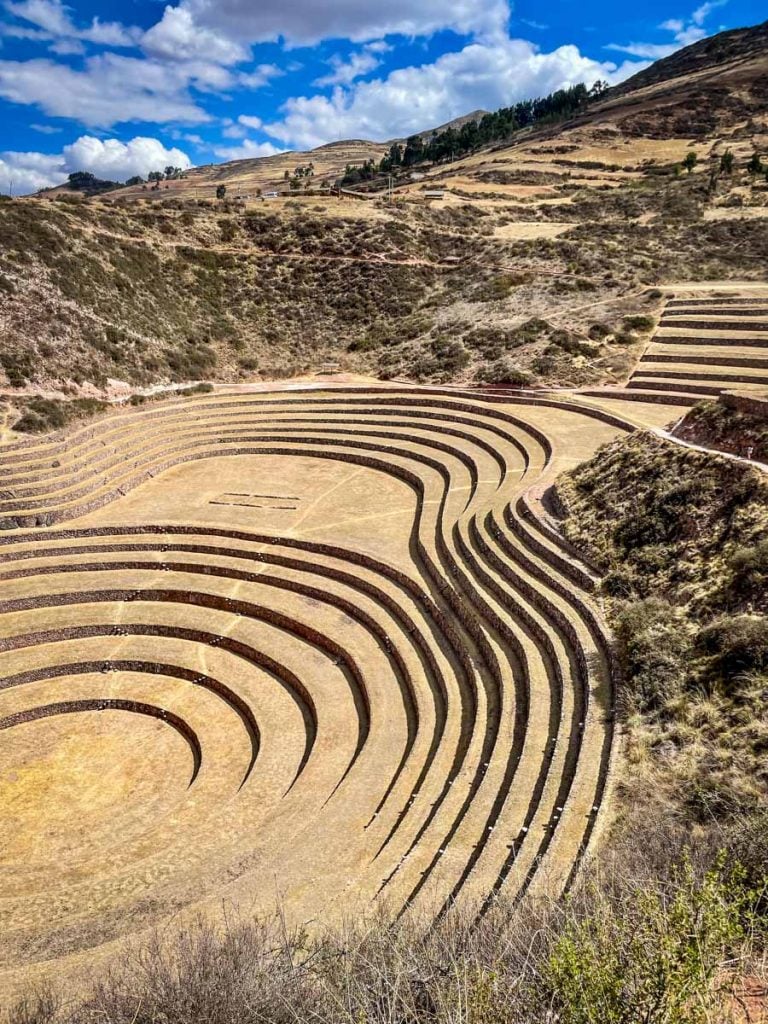
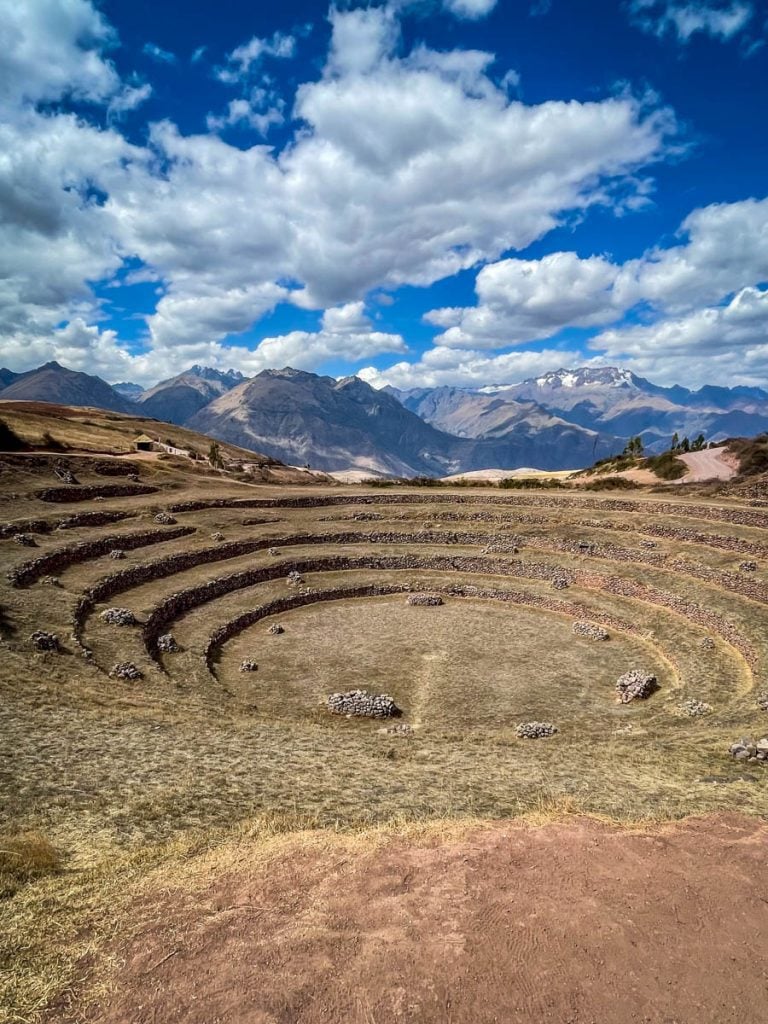
Another great archaeological mystery in the Sacred Valley are the Moray ruins. These ring-shaped ruins were believed to serve as a site of agricultural experimentation for the Incas.
There are three main circular terraced depressions that make up the ruins, the largest of which is approximately 30 meters (98 ft) deep.
From top to bottom, the terraces have an impressive 5°C (9°F) temperature range. The difference is palpable as you make your way down towards the center. Also with the way the terraces are situated, the sunlight hits them at different angles and intensities.
These defining details have caused each layer to develop its own microclimate. Using soil from different regions around Cusco, it’s believed the Incas studied the effects of altitude, sun exposure, and temperature to perfect the environments where certain crops would thrive from sea level to high-altitude.
5. Spend a night in one of the Skylodge adventure suites
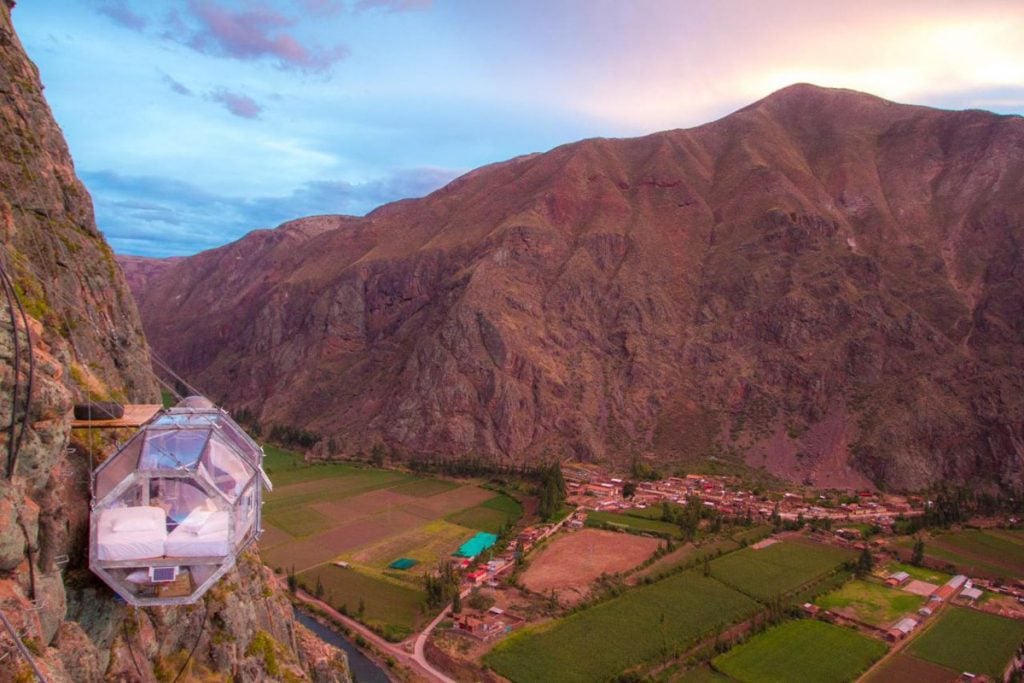
If you’ve ever wondered what it was like to spend the night on the side of a cliff, 396 meters (1,300 feet) in the air, you’re going to want to check out the SkyLodge Adventure Suites. Boasting the world’s first sky-high hanging lodge, you can immerse yourself in the beauty of the Sacred Valley from a birds-eye view.
The goal of these suites is to bring you to the edge of your comfort zone (pun intended!) without sacrificing luxury. So while many people will shy away from the concept, those looking to (quite literally) live life on the edge, will be rewarded with panoramic views and unmatched star-gazing in the heart of the valley.
Each octagonal capsule is made with aerospace grade materials, making them secure and weather resistant so they’re completely safe. Due to their location, you can only access the capsules by a vertical climb or strenuous hike.
Once inside the capsule, you’ll have all the creature comforts you could want to make your stay deep in nature feel the most luxurious: a double-bed, bathroom, and lounging area. Your stay includes breakfast and dinner made fresh, delivered by professional climbers directly to your pod.
The SkyLodge offers a once-in-a-lifetime experience for those looking to get off the beaten path and experience the thrill of one of the world’s most unique accommodations.
6. Quad biking through the Sacred Valley
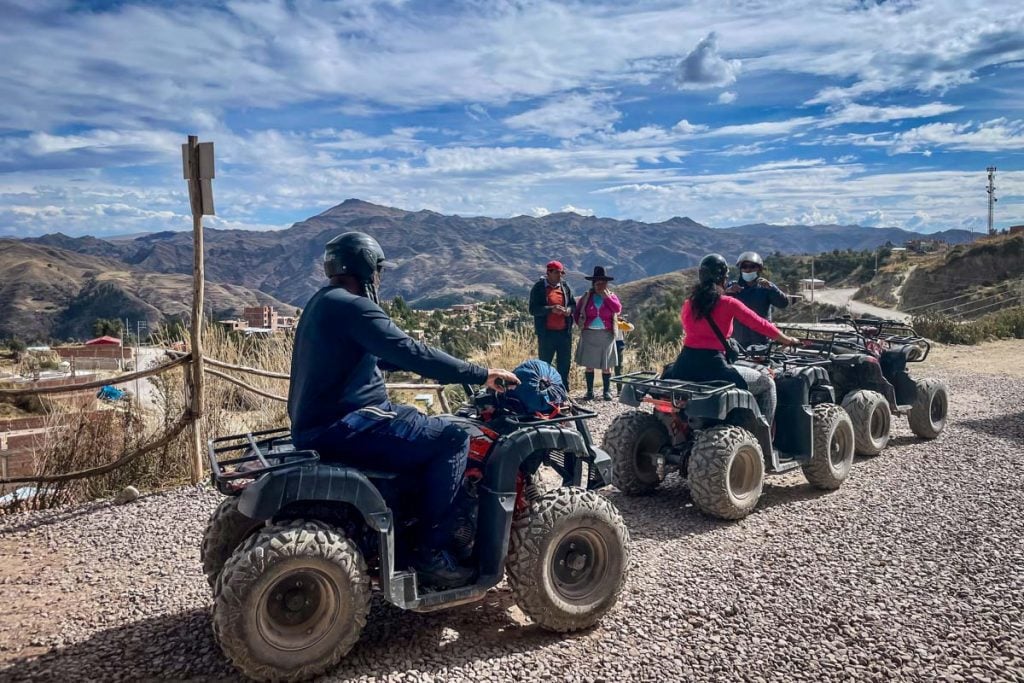
One of the best ways to experience the breathtaking scenery of the Sacred Valley is by taking a thrilling quad bike ride through the heart of the Andean Mountains.
This quad-biking tour is the perfect way to make the most out of a trip to the Sacred Valley if you only have a day. Your guides will pick you up in Cusco, where you’ll ride through many small towns until arriving at the colonial town of Maras.
Immerse yourself in the colonial architecture and bustle of local life, then make your way to the handful of archaeological sites, including Moray and the Maras Salt Mines, nearby.
Quad biking is an adventurous way to get around the valley and a great way to knock out a few amazing sites in the Sacred Valley.
7. Make a detour to Chinchero
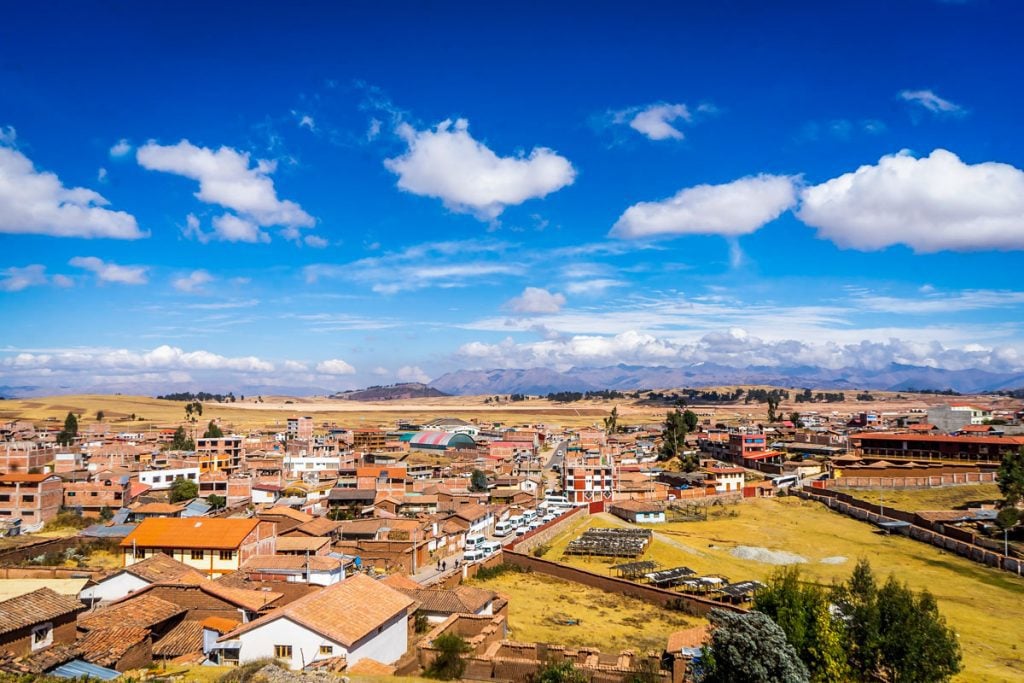
It’s a wonder why this little town just northwest of Cusco, filled with the country’s most renowned weaving and towered over by the mighty Salkantay and Vilcabamba Range, is so overlooked when traveling through the Sacred Valley.
Although the town is mainly known to locals as the birthplace of the rainbow, due to the town’s colorful weaving traditions, Chinchero is known to be where the Sacred Valley of the Incas begins.
At 3,762 meters (12,343 feet) above sea level, the town is about 1,300 meters higher than the Imperial City of Cusco.
When visiting Chinchero today, you can see the ancient traditions continuing to flourish for hundreds of years amongst the town’s colonial influences.
Things to do in Chinchero
- Chinchero ruins: Among Incan architecture and stone work are terraces that hold the most rich and fertile soil in the Sacred Valley. The lands are still used today to grow potatoes, quinoa, olluco, and fava beans that are sold at the local market.
- Iglesia Colonial de Chinchero: Built in 1607 by the Spanish, this colonial church covers the remains of an Incan palace. Its ornate painted ceilings and details draw from traditional and Catholic inspirations.
- Chinchero market: This is one of the most traditional markets you’ll find in all of South America. Although smaller than the one in Pisac, it still offers beautiful handmade items.
- Interpretation Center of Andean Textiles: One of Chincheros defining features is that it’s the weaving hub of Peru. Learn from local women how they select and prepare wool, and showcase the ancient weaving traditions.
8. Go rafting down the Urubamba River
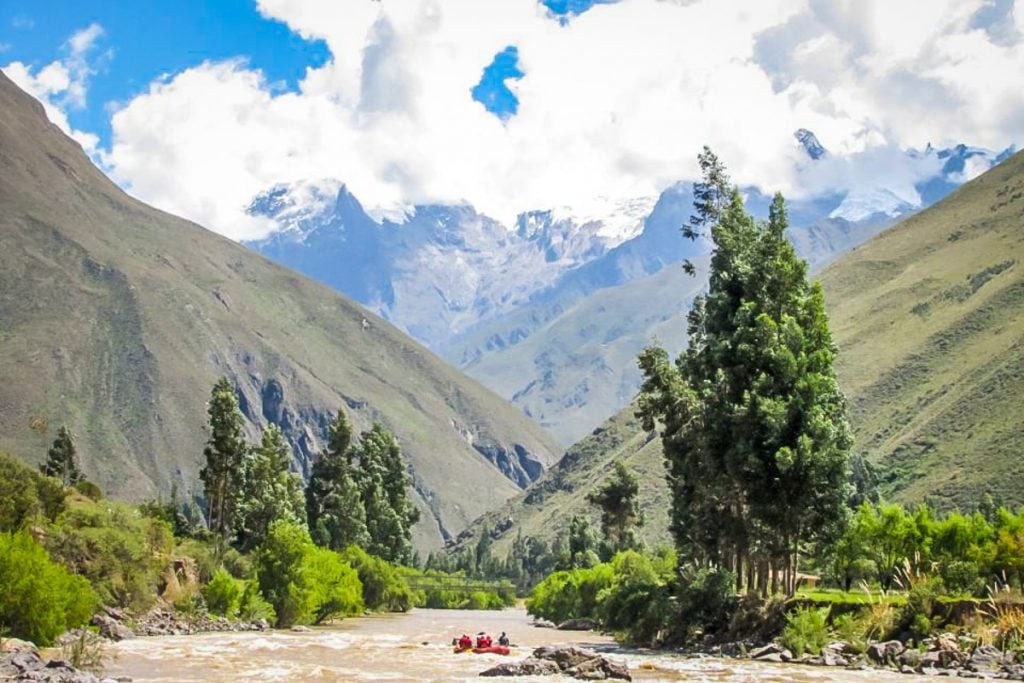
The Urubamba River is the force that carved the Sacred Valley of the Incas over millions of years. With Class II and III rapids, an adrenaline-filled rafting tour is the best way to take in the stunning riverside views of the valley.
You’ll travel to the banks of the Upper Urubamba River and gather all the necessary equipment with your guides as they give you a safety briefing before you set out.
Along the 2.5 hour rafting journey, you’ll float down the river and navigate white water rapids along the way. If you’re visiting the Sacred Valley in Peru during the wet season, the rapids can climb to class IV and even IV+.
Wind down after your journey with hot showers and saunas at the Cusipata River Camp. After a filling lunch, you’ll end the day back in Cusco.
9. Go hiking around Urubamba
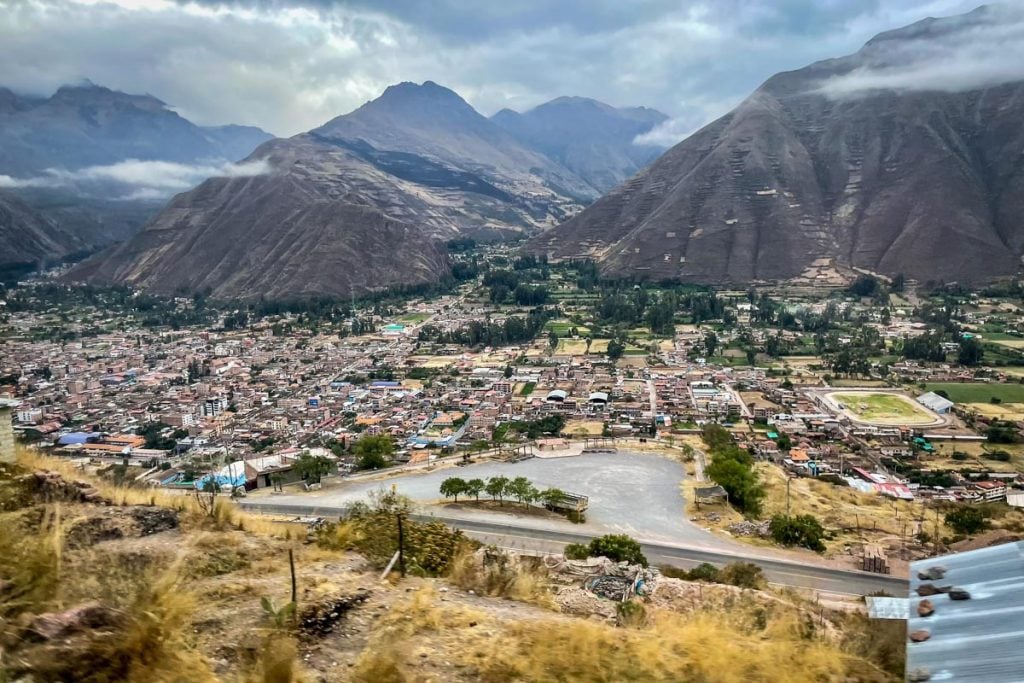
The Sacred Valley in Peru is most known for its spectacular natural scenery, and the most immersive way to take in all the incredible views is by hiking the variety of scenic trails.
- Laguna Juchuycocha: This turquoise lake is nestled in the mountains behind Urubamba. This hike makes for a perfect, crowd-less day trip to a treasure in the Andes.
- Saywa Mountain: Enjoy 360-degree views at the top of this sacred mountain. Believed to be an energy-source by the Incas, you’ll experience nothing but magic exploring this peak and the archaeological site at the top.
- Perolniyoc Waterfall: This hidden treasure is a must-do day hike from Urubamba. Pass Incan ruins of Raqaypata on your way to this cascading waterfall.
- Inca Trail: As the most famous hike in the region, and arguably the world, this unforgettable 4-day trail takes you along the original steps of the Incas to Machu Picchu.
If you have more time in the Sacred Valley, we definitely recommend going on a longer trek through this stunning region. The day hikes are immeasurable, but nights at the foot of enormous mountains and the remote, crowd less views are unmatched.
10. Go paragliding over the Sacred Valley
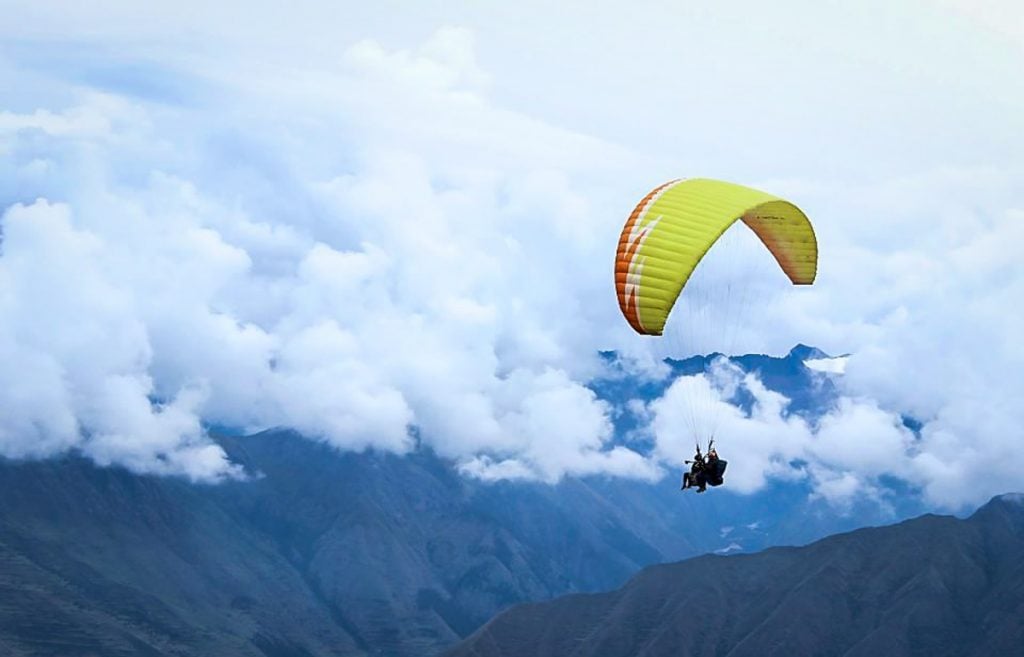
Take on the perspective of the magical Sacred Valley from the eyes of the native Andean Condor. A scenic paraglide over the valley will take you to new heights over the lush green tones and mountainous backdrop.
This paragliding tour begins with a pick-up in either Cusco or the Sacred Valley and a quick meeting at the flight point to go over instructions for the flight and safety recommendations. You’ll take flight from Cerro Sacro, a mountain just northeast of Cusco, from an impressive 12,730 feet.
Even before the flight takes off, you’ll be able to enjoy panoramic views over the Sacred Valley before descending down the mountain. Experience the birthplace of the Incas from an entirely new perspective.
Are you planning a trip to Peru?
We have lots of resources on travel in Peru and destinations throughout the country. Check out our Complete Peru Travel Guide for all the answers to your most burning questions, or read some of our favorite articles below.
- How to Get from Lima to Cusco
- Adventurous Things to Do in Cusco
- How to Get to Machu Picchu: Guide to Visiting
- Rainbow Mountain: How to Get There & What to Expect
Save this article on Pinterest for later!
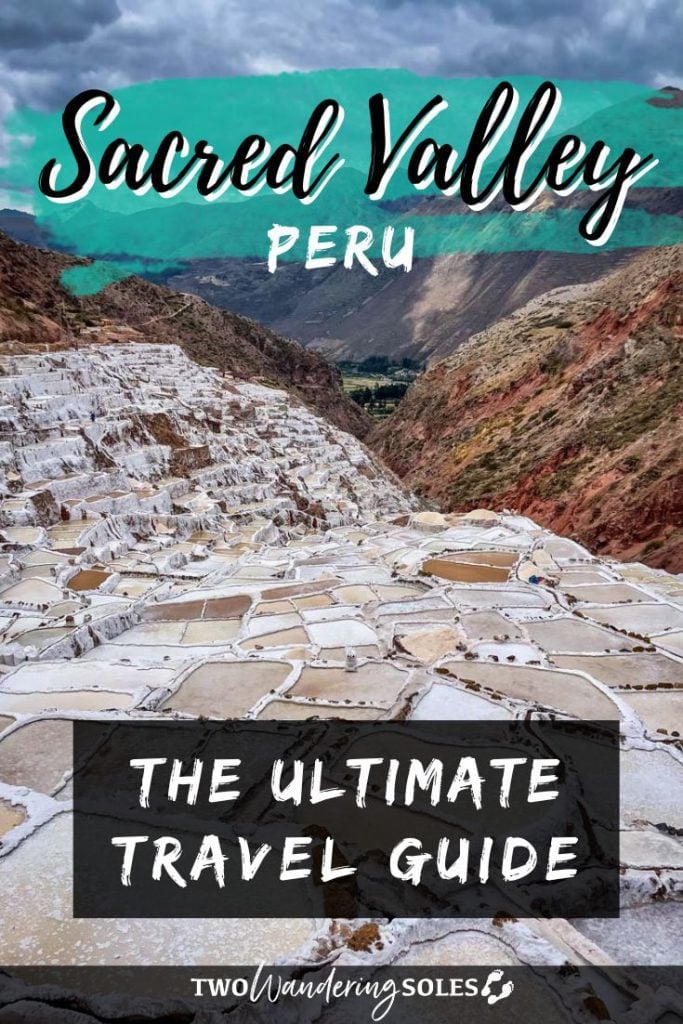
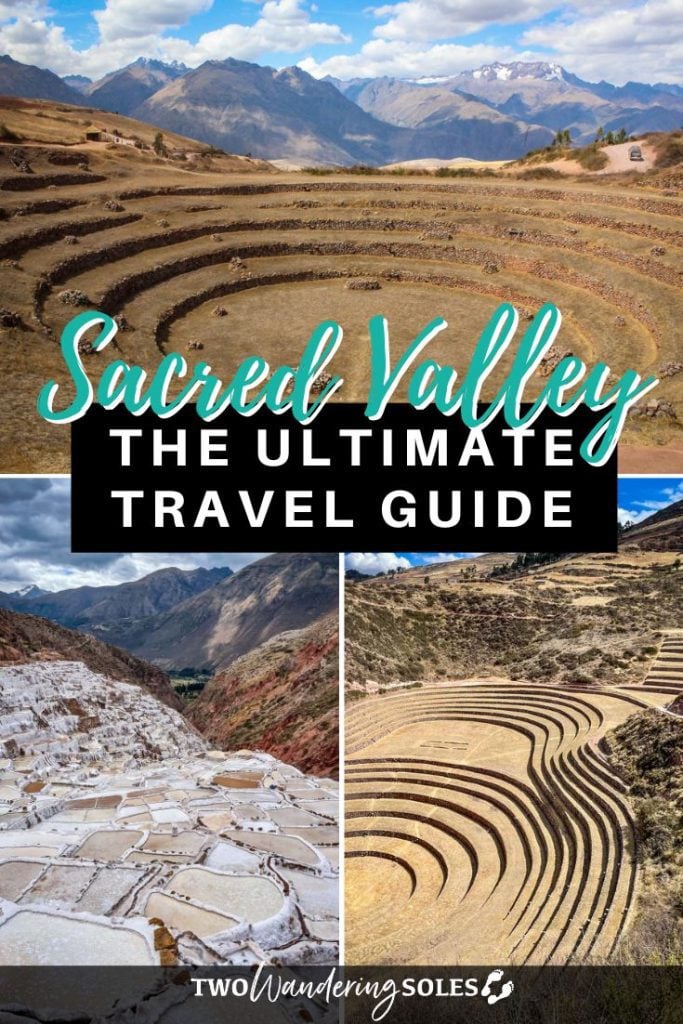
We want to hear from you!
Which adventures in the Sacred Valley Peru are going on your bucket list? Do you have more questions about visiting the Sacred Valley for the first time? Leave your comment below and we’ll do our best to get back to you!
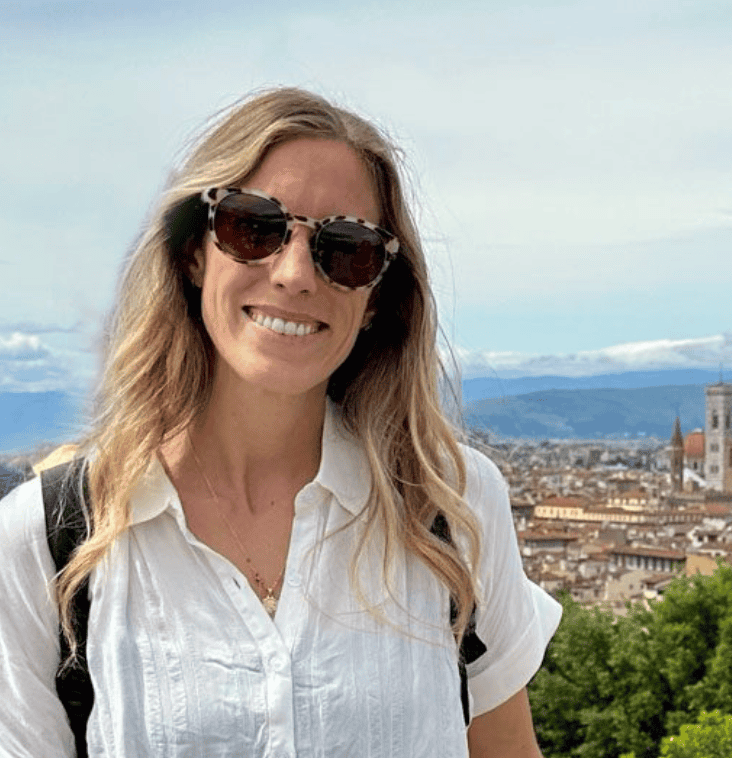
Amanda Pointer is the Director of Content at Two Wandering Soles, keeping all travel stories on track from idea to publish. A journalist with a photojournalism background and years in digital content, marketing, and SEO, she makes sure every piece is clear, useful, and relatable. Since 2019, she’s been the behind-the-scenes force turning big travel ideas into stories that help readers plan their dream trip.

Really Amazing post on outdoor activities, which is really informative and has beautiful Pictures.